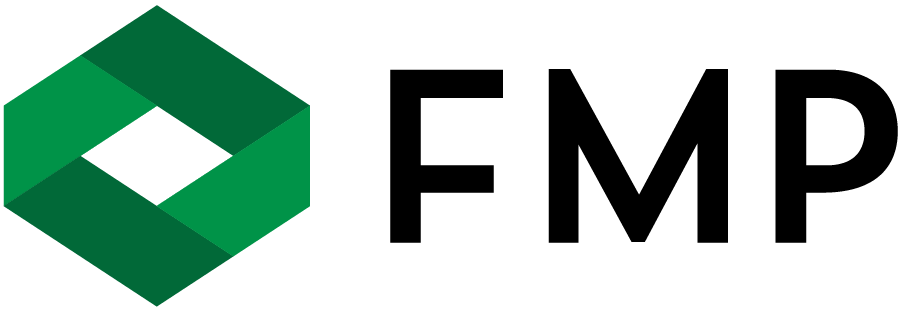Part 2: Get Technical
In part one, we discussed the benefit of having a conversation about finances with your significant other, setting goals, establishing time horizons, creating a budget and paying off debts. Now I want to talk about the financial accounts and investments that can hopefully allow you to reach the goals you set.
There are typically two type of people – those who are a walk-in closet and those that are a chest of drawers. I promise I am not crazy, so let me explain. Those who are a walk-in closet can have fewer financial accounts and immediately see how much is allocated to their different goals. These people might be ok with just one account for their savings and one IRA. The people who are a chest of drawers prefer to have different accounts for each individual savings goal. I am a chest of drawers. I have an account for saving for a house, I have another account for irregular expenses, I have my IRA and a donor advised fund. Think about which type you are and that will help make this process easier.
Opening Financial Accounts
I began planning what financial accounts would be opened and what their main purpose would be based on our goals. I already had a normal taxable account (brokerage account) and a Roth IRA from a few years prior, so I knew I had a good foundation. If you don’t have any investment accounts currently, don’t feel discouraged. I will walk you through how to open these accounts and the information on each one. Financial planning is a process, not an event. You must adapt to life changes. That is why you establish goals. They help you stay motivated throughout the process.
Types of Accounts
Taxable Investment Account
A taxable investment account can be an individual or joint account. These accounts are funded with after-tax dollars. This means the money you save into this account comes from your paycheck after taxes have been deducted. This is the most basic investment account. You can invest in equities (stocks), bonds, mutual funds, ETF’s, and more. Whenever you sell an investment, you have either a capital gain or loss. If you had a capital gain, you will be taxed on that gain. The money in these accounts are very liquid. This means if you needed it in your bank account, it would normally take less than two days to deposit the money. You can open a taxable investment account online at a place like Charles Schwab, Fidelity, or Vanguard.
IRA’s
IRA stands for individual retirement account. There are two main types of IRA’s to know about – Roth IRA and Traditional IRA.
The Roth IRA is funded with after-tax dollars like the taxable account. The major difference is the money grows tax free. This means every dollar you earn from your investments will not be taxed. The idea is you pay the tax up front when you’re in a lower tax bracket. As you get further along in your career and accumulate more money, you would probably be in a higher tax bracket during retirement. By paying the tax up front you avoid the tax when you withdraw the money. Once your income reaches $206,000 for married filing jointly or $139,000 for married filing separately, you are no longer able to contribute to a Roth IRA. Since this is a retirement account, the government has stated that you cannot access it until you are age 59 ½.
The Traditional IRA is a tax-deferred retirement account. When you contribute to a traditional IRA, you can deduct the contribution from your taxable income (up to certain income limits, depending on how you file your taxes). This reduces the total amount you pay in taxes for the year. Once you reach 59 ½ you can access the money in this account. When you make a withdrawal, the entire amount is considered taxable income. For 2020, the contribution limit is $6,000 for all IRA’s. Whether you split it up between a Roth IRA and a Traditional IRA, the maximum is still $6,000.
Investment Philosophy
After opening your financial accounts, you will have to decide how to invest your money. Generally, the more time you have to invest your money the more aggressive you can be. Not everyone is comfortable with taking on investment risk, so figure out how risk averse you are and use that to inform your investment decisions. In my retirement accounts, I have nearly 40 years until I can access them. I have selected an aggressive growth allocation containing one hundred percent equities. As I get closer to retirement, the allocation will become more conservative to make sure I am not exposed to as much risk. In my short-term brokerage, I have selected a moderate conservative strategy made up of sixty percent equities and forty percent bonds. The smaller your account value, the more important your contributions are. If you have $5,000 saved already and contribute $2,500, that is a fifty percent increase. If you have $100,000 and contribute $2,500, that is only a two and a half percent increase. The most important part is that you are saving as much as you can.
Planning for Time Horizons
Emergency Fund
Establishing an emergency fund is extremely important. An emergency fund is money that is easily accessible in case you have an irregular expense. Typically, an emergency fund is 3-6 months of expenses. There are a couple of ways to handle this. One is to simply have the money in your checking account. You obviously have direct access to this cash whenever you need it and have a smaller likelihood of needing to access your investments. Another way to have an emergency fund is a “keep in cash” function in a taxable brokerage account. This money is held in a cash equivalent investment, such as a money market, instead of being invested in something with more risk. By doing this, you can potentially see a slightly higher rate of return as opposed to the money in a checking account. This cash is not immediately accessible with your debit card, but the money that is “keep in cash” is still very easy to access, typically within a day or two. No matter which one you choose, you want the money easily accessible in case of an emergency.
Charitable Giving
Not everyone wants to participate in charitable giving. That’s ok, but I am passionate about it and have incorporated it into our finances. The easiest way to do this is gifting assets from your taxable account to the organization of your choice. Gifting assets from your taxable account allows you to avoid any capital gains tax and deduct the contribution from your taxable income if you itemize your deductions. In order to obtain the tax benefit, the organization you gift your assets to must be a non-profit or a qualified charity.
Short-Term
I see short-term dollars as money to be used within a few years. This is how my mind helps separate these funds from the rest of my assets. I talked previously about our goal of saving for a down payment on a house. This is a short-term goal for us. We do not want to pay rent on an apartment any longer than is necessary.
We are saving for our house in a taxable brokerage account. At some point we will need almost all the money in this account. Because of this, we do not want to take on a lot of risk and lose a large portion of the account value. We have the money in this account invested in a moderately aggressive manner to hopefully see some growth but have less risk exposure than a very aggressive investment strategy.
Intermediate-Term
This category has such a broad timeline. This is the category that, in my mind, I will hopefully only need a portion of the funds in this account at any time. The money that is invested here is intended for a down payment on a car, vehicle maintenance, house maintenance, vacations, or anything else that would be considered an irregular expense.
We have a second taxable brokerage account with a different investment strategy than our short-term investments. The money in this account is invested in a more aggressive manner. We don’t intend to use the full amount of the account at any time, so we can afford to take on the risk for a potentially higher return on our investment. Since this is not our primary goal, we are not saving as much money into this account as we are into the “home fund”.
Long-Term
Our long-term savings consist of our retirement accounts. I already had a Roth IRA before I entered the workforce and will open one for her once we get married. Something to remember here is the earlier you start, the better. Retirement funds are not meant to be used until you reach retirement age. Withdrawing funds from a retirement account will typically incur a penalty and taxes.
If you decide to have children, incorporating education planning into your finances becomes important. Some people open investment accounts for their kids when they are young and put a small amount of money into it. Either way, this would be considered long-term.
Employer-Sponsored Retirement Plans
Employer-Sponsored plans would include any retirement plan where your employer contributes either a matching percentage or your salary or a set percentage of your earnings. These plans would include a 401(K), a Roth 401(K), and a 403(B). By contributing to your retirement plan at work and receiving a match on those contributions, you are receiving free money. If you contribute 3% and your company matches that contribution, that is 3% that you earned for free. The earlier you start saving the better, so take time today to think about how you have set yourself up for success in retirement.
Conclusion
I believe in a healthy balance of saving and enjoying your income right now. You do not want to get so caught up in saving that you miss out on activities and things in the present that can bring so much joy. On the other hand, you absolutely don’t want to spend more than you make and go into debt. That is a hole that takes a long time to crawl out of. Find a balance that is right for you and follow these steps to hopefully get your finances in order.
*The information presented here is not specific to any individual’s personal circumstances. FMP Wealth Advisers is not providing investment, tax, legal, or retirement advice or recommendations in this article.
**To the extent that this material concerns tax matters, it is not intended or written to be used, and cannot be used, by a taxpayer for the purpose of avoiding penalties that may be imposed by law. Each taxpayer should seek independent advice from a tax professional based on his or her individual circumstances.
***These materials are provided for general information and educational purposes based upon publicly available information from sources believed to be reliable — we cannot assure the accuracy or completeness of these materials. The information in these materials may change at any time and without notice.
Certified Financial Planner® (CFP®)
The program is administered by the Certified Financial Planner Board of Standards Inc. Those with the CFP® designation have demonstrate competency in all areas of finance related to financial planning. Candidates complete studies on over 100 topics, including stocks, bonds, taxes, insurance, retirement planning and estate planning. In addition to passing the CFP certification exam, candidate must also complete qualifying work experience and agree to adhere to the CFP Board’s code of ethics and professional responsibility and financial planning standards.
Chartered Financial Analyst (CFA®)
This designation is offered by the CFA Institute (formerly the Association for Investment Management and Research [AIMR]). To obtain the CFA charter, candidates must successfully complete three difficult exams and gain at least three (3) years of qualifying work experience, among other requirements. In passing these exams, candidates demonstrate their competence, integrity and extensive knowledge in accounting, ethical and professional standards, economics, portfolio management and security analysis.
Chartered Retirement Planning Counselor (CRPC®)
This designation is offered by the College for Financial Planning. Individuals may earn the CRPC designation by completing a study program and passing a final multiple-choice examination. The study program to become a CPC includes the entire retirement planning process, meeting multiple financial objectives, sources of retirement income, personal saving, employer-sponsored retirement plans, income taxes, retirement cash flow, asset management, estate planning and more. Every two years, CRPC professionals must complete 16 hours of continuing education and pay a small fee to continue using the designation.



